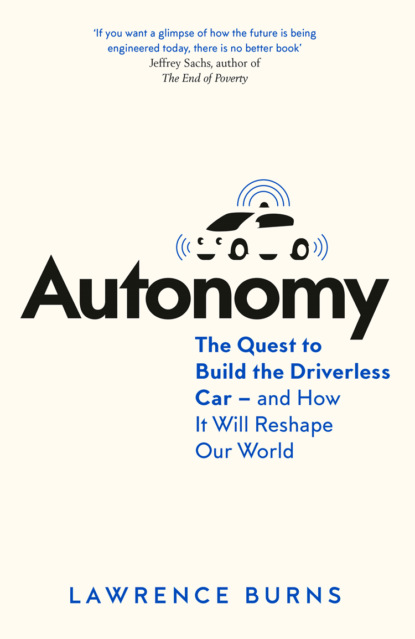По всем вопросам обращайтесь на: info@litportal.ru
(©) 2003-2024.
✖
Autonomy: The Quest to Build the Driverless Car - And How It Will Reshape Our World
Автор
Год написания книги
2019
Настройки чтения
Размер шрифта
Высота строк
Поля
To demonstrate Boss’s capabilities, Urmson posted videos on the Tartan Racing blog. One day, he got a phone call from his liaison with General Motors. The middle manager had been watching the videos Urmson was posting and he was alarmed—so alarmed, in fact, that the manager was considering suggesting GM pull its sponsorship. Urmson gulped. That would be disastrous for Tartan Racing, which needed GM’s sponsorship money. It also would be an enormous black eye for the team.
This was a fascinating moment—one of the first examples of the disconnect between Detroit and the computer scientists and engineers who were working to make autonomous vehicles a reality. This disconnect would manifest later in a years-long rift between Detroit and Silicon Valley. Although the GM manager making the call would have worked under me, I only learned of this incident years later, via Urmson. I could see both sides. Throughout the 1990s, GM had developed a strong culture of workplace safety. Our testing protocols were extremely risk averse. The GM liaison was worried that Tartan Racing’s testing was going to seriously injure someone. He also may have been trying to protect me, and my decision to sponsor the team. It would have been easy to interpret the near-misses in the videos Urmson posted as indications of serious issues with Boss’s programming. GM’s sponsorship of Tartan Racing represented a significant cash investment at a time of deepening financial instability. This was 2007, after all, right before the financial crisis. I was being forced to fight for every research dollar I could get. Anything but a win from Tartan Racing would be a serious personal embarrassment for me, and could compromise my credibility with my strategy-board peers.
Urmson realized he needed to conduct some stakeholder relations. “No, no,” he said. “You guys don’t understand—what we’re testing is far beyond the scope of anything that Boss will face in the Urban Challenge. We’re just trying to see what it can do—we think it’s going to perform amazingly in the finals.”
This reassured the GM middle manager. Heading into October 2007, Boss had eighteen sensors bolted, welded and glued to its exterior. The robot’s luggage compartment housed 10 computers processing 300,000 lines of software code that could make driving decisions 20 times a second. Just months before, Boss could conduct its most complex maneuvers at 15 mph. Now Boss could conduct the same maneuvers at more than twice that speed. It could park itself in a busy parking lot. And if the road was blocked ahead of it, Boss could execute a three-point turn and plan a new route to its objective—completely autonomously.
All of which created an unusual amount of confidence for the Carnegie Mellon team, and for Urmson himself. The first race, Urmson was pretty sure they wouldn’t finish. The second, he and Red and Peterson were so concerned about no one finishing that they set Sandstorm’s speed too low and ended up taking second and third. During the 2007 site visits, Tether indicated he didn’t think CMU even ranked in the top five. But something had happened to Boss in those final two months. This time, Urmson and the rest of the team felt as confident as they ever had heading into the national qualifying event.
That event began on October 25, 2007, in Victorville, California. The venue was George Air Force Base, which featured all the hallmarks of a regular town, such as buildings, roads, homes, apartment buildings and parking lots. All the hallmarks, that is, except for people, because George AFB had been shut down in 1992.
Вы ознакомились с фрагментом книги.
Приобретайте полный текст книги у нашего партнера:
Приобретайте полный текст книги у нашего партнера:





